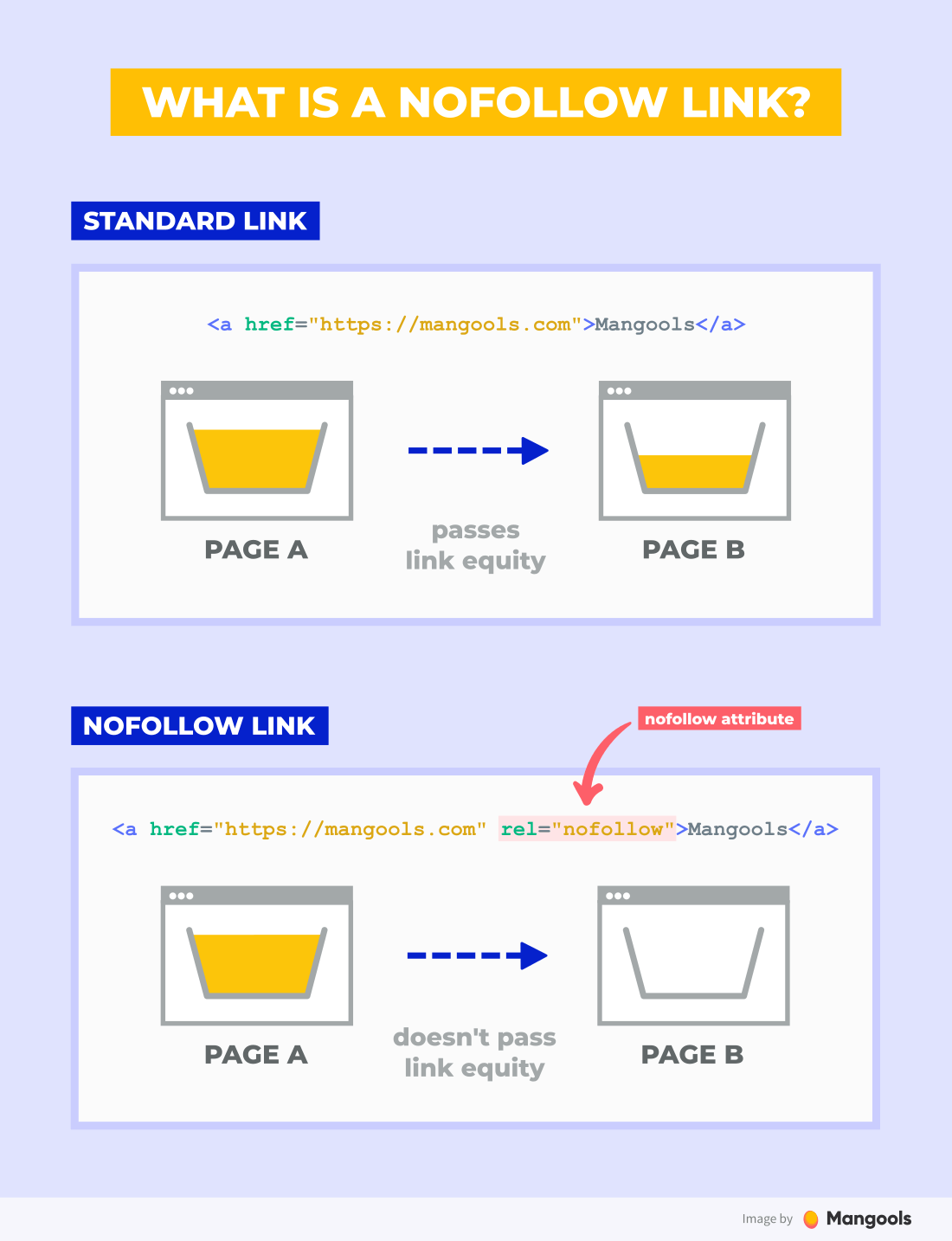Dofollow and Nofollow are HTML tags that indicate how search engines should treat the links on a web page.
Dofollow links instruct search engines to follow the link to the destination page, enabling search engines to pass page authority and link juice to the linked web page.
Nofollow links instruct search engines not to follow the link to the destination page, so search engines do not pass link juice, and hence have less impact on the destination page’s SEO.

Here are the fundamental differences between DoFollow and NoFollow:
1. Link Juice
Dofollow links pass link juice, also known as page authority, to the linked website, while Nofollow links do not pass any link juice.
2. Search Engine Indexing
Search engines follow Dofollow links to index and rank the linked website, while they do not follow Nofollow links for indexing purposes.
3. Anchor Text
Anchor text affects a website’s SEO rankings. With Dofollow links, anchor text helps to enforce the linked site’s keyword relevance. Nofollow links, however, have no impact on a website’s anchor text relevance as they do not affect the linked website’s ranking.
4. Spam
Search engines may penalize websites that use spammy link building techniques like using excessive dofollow links. Hence, it is important to have a mix of DoFollow and NoFollow links in your overall backlink profile.
Conclusion
In conclusion, Dofollow and Nofollow links are important for search engine ranking and SEO. Dofollow links pass link juice and can help improve rankings while Nofollow links do not pass link juice, but are useful for building a natural backlink profile that avoids penalties. It’s essential to maintain a balance between the two link types, to stay on the right side of search engines and to create a robust backlink profile that provides the best possible results for your website in terms of search engine ranking, authority and relevance.
Some frequently asked questions (FAQs)
Q: What are DoFollow links?
A: DoFollow links are HTML links that tell search engine crawlers to follow the link and pass on any link authority or equity to the linked website. The DoFollow attribute is the default for HTML links.
Q: What are NoFollow links?
A: NoFollow links are HTML links that instruct search engine crawlers not to follow the link and not to pass on any link authority or equity to the linked website. This is achieved by adding a NoFollow attribute to the HTML link.
Q: What is link equity or link juice?
A: Link equity or link juice is a term used to describe the authority or value passed on from one page to another through links. This contributes to the ranking potential of a web page.
Q: Are NoFollow links useful for SEO?
A: Although NoFollow links do not directly pass on link juice to the linked website, they remain useful for building a natural backlink profile and avoiding penalties from search engines.
Q: How can I tell if a link is a DoFollow or NoFollow link?
A: You can inspect the HTML of a website to see if a link is a DoFollow or NoFollow link. Generally, if a link has no NoFollow tag, then it is a DoFollow link.
Q: How can I use DoFollow and NoFollow links effectively?
A: To use DoFollow and NoFollow links effectively, it’s important to maintain a good balance between them, and use a mix of both types of links. This helps to build a natural and diverse backlink profile that can help improve your website’s search engine rankings.
Overall, understanding and effectively using DoFollow and NoFollow links is an essential aspect of SEO. They enable you to build a well-rounded and natural backlink profile that can enhance your website’s search engine rankings and authority over time.

